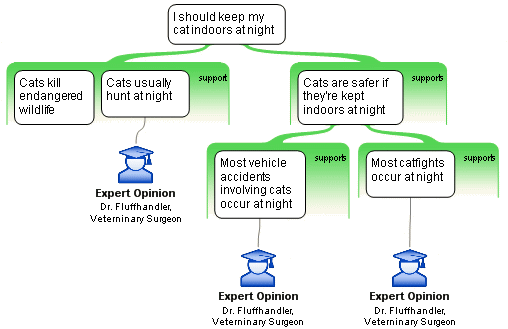The Science Of Scientific Writing Set 10 Set 10-Assessing again • Exercise 1 • Exercise 2 • Larger maps • Exercise 3 • Exercise 4 • Final.
OVERVIEW: The way to well-written science
PART I: Paragraphs and Sentences
SET A: Paragraphs: The Maps Behind Them
SET B: Paragraphs: Using Maps to Meet Readers' Expectations
SET C: Paragraphs with Something Extra: Points and Tails
SET D: The Generic Section: Expectations and Maps as Blueprints
SET E: Scientific Sections: The Methods and Results
SET F: Scientific Sections: The Discussion
SET G : Scientific Sections: The Introduction
SET H : Sentences
SET I : The Paper as a Whole
PART II: The Paper and its Sections
SET 1: Argument Parts
SET 2: Indicator Words
SET 4: Locating Arguments in Prose
SET 5: Rationale's Essay Planner
SET 6: Evidence in Arguments: Basis Boxes
Synthesis 1: Position-Early Paragraphs
Synthesis 2: Position-Final Paragraphs
Synthesis 3: Writing a Discussion I
Synthesis 4: Writing a Discussion II
Exercise 3
1. Evaluate this Analysis map:
Drag this image onto the workspace to proceed. You must be using the inbuilt browser in Rationale 1.3 or later.
Hints
- Evaluate the map in this order:

- When evaluating basis boxes ask yourself: How reliable is this source of information? What support does this basis provide for the claim above it?
- When evaluating premises ask yourself: Is this true?
- Make sure you evaluate all the premises in a reason before evaluating the reason itself
- When evaluating reasons ask yourself: Given my assessment of the claims and their bases, should I accept this reason? Is it relevant to the claim above it?
- Finally evaluate the position: what confidence do you have in this given your assessment of the two reasons bearing upon it?
- Make sure you've put evaluation icons in all claim boxes, as well as coloring the body of the reasons
2. Check your work against the model.
Content of this page drawn in whole or part from the Austhink Rationale Exercises with permission from Austhink.
